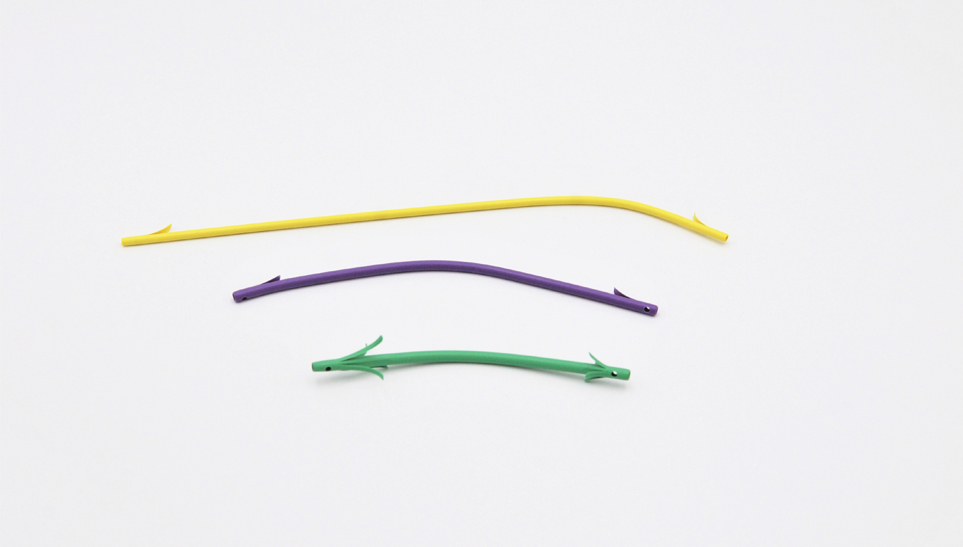WHAT IS THE SIGNIFICANCE OF USING ERCP GUIDEWIRE IN RETROGRADE CHOLANGIOPANCREATOGRAPHY?
(2023年10月05日)As a commonly used endoscopic device, guide wire is the lifeline of difficult ERCP surgery. Flexible application of guide wire can not only shorten the operation time and improve the success rate of intubation, but also reduce the occurrence of complications.
1. The use of ERCP guidewire can be used for smooth angiography
The guide wire has the functions of no tissue damage, elastic front end, and very smooth when wet, so it can enter the bile duct or pancreatic duct and pass through the stenosis or obstruction by exploring the cavity of the bile duct or pancreatic duct, and guide the accessory to improve the success rate, thereby successfully imaging.
2. The use of ERCP guidewire can save time for other treatments and relieve the pain of patients
If the guide wire is directly inserted into the incision knife for intubation, the nipple incision can be performed immediately after angiography, so that the incision knife is not easy to slip out and avoid repeated intubation.
After exiting the scalpel and keeping the guide wire in the bile duct or pancreatic duct, other treatments can be performed. The flexible application of ercp products guide wire can significantly improve work efficiency and success rate.
3. Use the ERCP guidewire to guide the accessory into the target position
Behind the front end of the guide wire is a steel wire. The strength of the guide wire can be used to increase the insertion force and guide accessories (brackets, mesh baskets, etc.) into the target position.
For patients with too small nipples, displaced nipples after surgery, or with diverticulum beside the nipples, the guide wire can be indwelled in the pancreatic duct and the nipple can be controlled in the center of the field of view to make intubation in the direction of the bile duct easier.
During EST, the direction of the nipple can be changed by placing the ERCP guidewire in the bile duct to avoid damage to the edge of the diverticulum during EST, while controlling the incision speed and adjusting the incision direction in time to achieve an ideal incision effect.
In the process of EST, there may be duodenal mucosal annular folds above the nipple or when the nipple position is relatively biased and cannot be completely incised, the guide wire can be placed in the bile duct to change the direction of the nipple to avoid bleeding and perforation happened.
The placement of a guide wire in the bile duct or pancreatic duct during calculi facilitates the entry of stone removal instruments into the bile duct or pancreatic duct, facilitates stone removal, and reduces the chance of stone incarceration for beginners.
4. The application of ERCP guidewire can reduce the occurrence of pancreatitis
Pancreatitis after ERCP is a common complication, mainly due to the excessive injection of contrast agent too fast, the high pressure in the pancreatic duct, and the obstruction of pancreatic juice drainage.
If it is difficult to insert the nipple, and the pancreatic duct is repeatedly inserted to cause edema and injury, pancreatitis occurs. Using the guidewire technique can avoid excessive injection of contrast agent into the pancreatic duct and prevent pancreatitis.
In addition, the direction of the biliopancreatic duct can be judged by the direction of the guide wire of the ercp product based on the X-ray-opaque property of the guide wire, rather than the injection of the contrast agent;
The soft and hydrophilic properties of the guide wire tip make it less damaging to the biliopancreatic duct wall, thereby reducing the occurrence of cholangitis and pancreatitis.
ERCP and related techniques (such as endoscopic papillotomy, endoscopic stone removal, endoscopic nasobiliary duct placement and drainage, biliary stent implantation, etc.) are currently one of the main methods for the diagnosis and treatment of biliopancreatic diseases.
Through this technology, countless patients with pancreatitis and obstructive jaundice have been diagnosed and effectively treated. This technology has relatively high difficulty and certain risks in endoscopic minimally invasive technology. The full application of new guide wire technology can improve the success rate of angiography and improve the efficiency of the angiography. The treatment success rate is significantly improved.
The use of ERCP guidewire pathfinding can significantly reduce the occurrence of pancreatitis, reduce the operation time, relieve the pain of patients, and save medical resources.
For more information about ercp meaning and endoscopic accessories, please feel free to contact us!
- このできごとのURL:



コメント